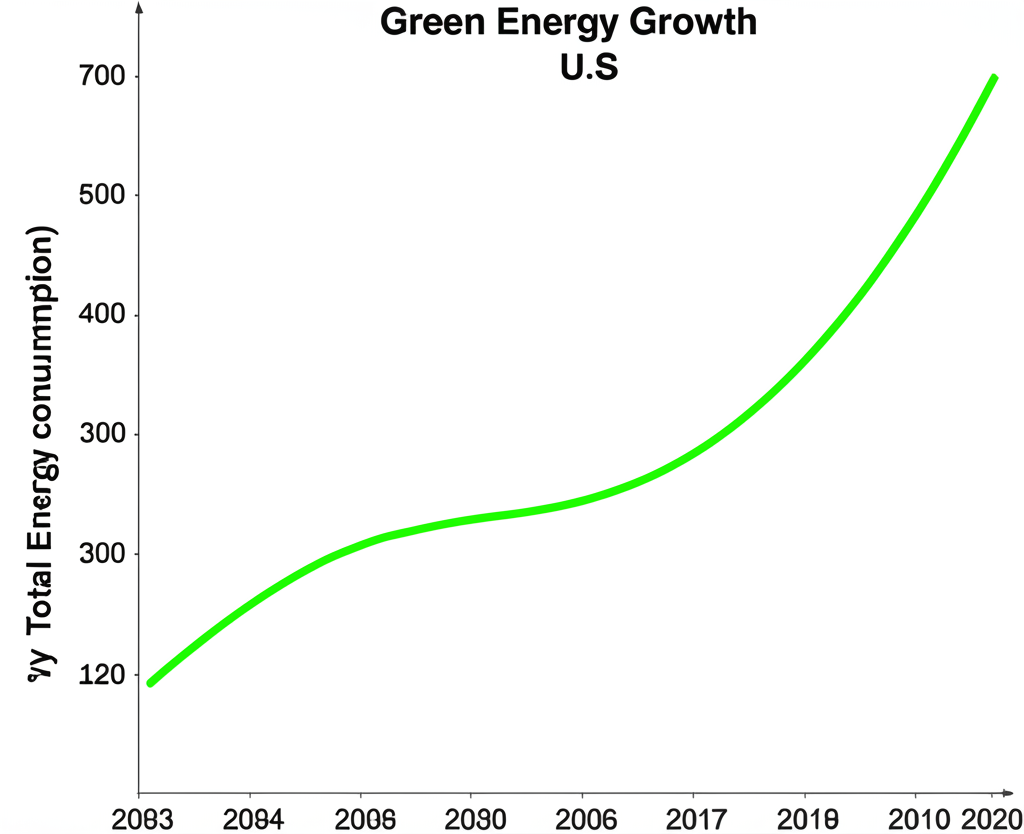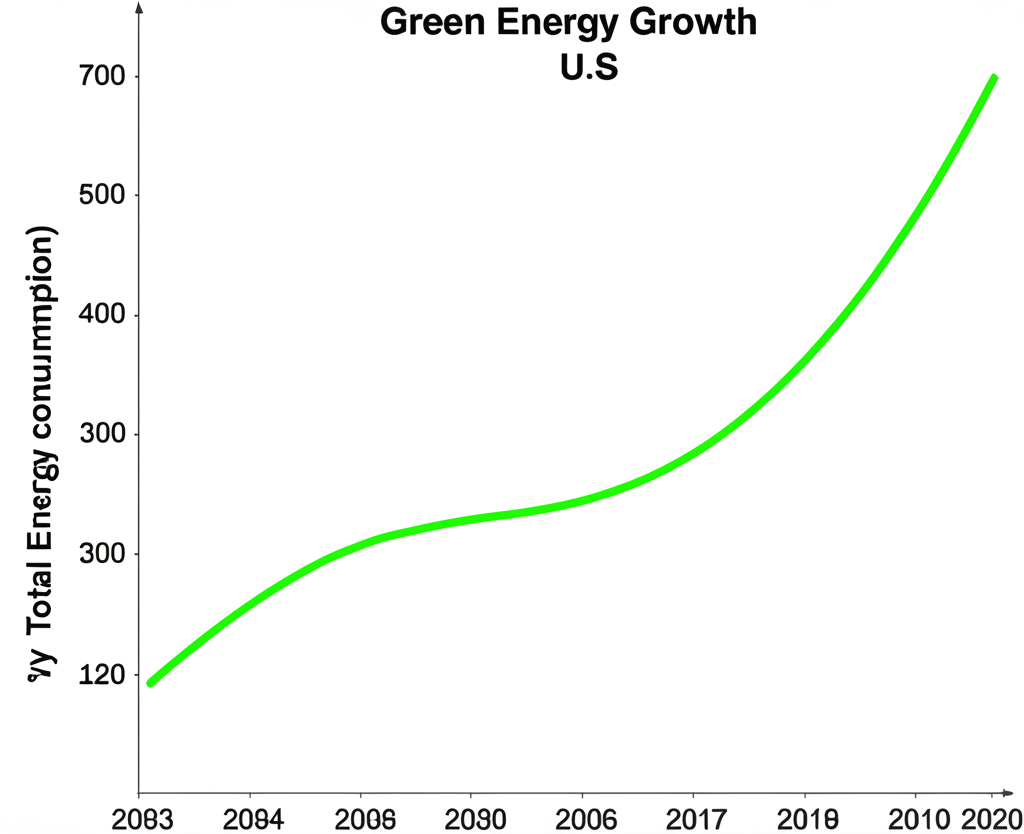As the drive toward sustainability gains momentum worldwide, investing in green energy stands out as a smart choice for portfolios focused on growth. For everyday investors across the United States, 2025 brings a dynamic mix of cutting-edge tech, shifting market forces, and strong government backing. This guide breaks down the key opportunities, potential pitfalls, and practical steps to help you make informed moves in the U.S. renewable energy space.

Many U.S. investors are asking whether green energy makes sense for their 2025 plans-and the answer is a resounding yes. With a steady path toward cutting carbon emissions and plenty of policy support, this sector isn’t just good for the planet; it’s a major driver of economic progress, ready for big leaps forward. Knowing the best places to put your money, the smartest ways to do it, and the hurdles to watch out for will help you boost returns while supporting a greener tomorrow.

The Green Energy Revolution: Why Invest in the United States for 2025?
Shifting to clean energy ranks among the biggest economic changes of our era. Around the world, funding for renewables keeps hitting new highs, and the U.S. leads the pack in this transformation. Worries about the environment, combined with the falling prices of solar panels, wind turbines, and other tech, fuel this surge. For those putting money into the market, it means solid chances for steady growth and a way to match your investments with eco-friendly principles.
People often wonder if green energy truly pays off, and the rising need for clean electricity, electric vehicles, and better storage options provides a clear yes. As America pushes for self-reliant energy and a less polluted power grid, the firms leading these changes are primed for major gains.
Understanding the United States Green Energy Landscape
America’s renewable energy scene is varied and growing fast. Solar and wind top the list, with huge setups dotting the landscape from coast to coast. But that’s not all-hydroelectric dams, geothermal plants, and biofuels add to the mix, drawing on the nation’s huge size and diverse weather patterns to tap into all sorts of clean resources.
The U.S. Energy Information Administration (EIA) reports that renewables have steadily claimed a bigger slice of the country’s electricity production over the last ten years, a pattern expected to pick up speed through 2025 and into the future. Cheaper tech, smarter designs, and rules that cut emissions while boosting energy security all play a role in this rise.
Policy Tailwinds: The Impact of US Legislation on Green Energy Investments in 2025
What sets U.S. green energy apart in 2025 is how federal laws supercharge the sector, especially through the Inflation Reduction Act (IRA). Passed in 2022, this bill marks the biggest climate funding package in American history, doling out tax breaks, rebates, and perks throughout the clean energy chain-from production to everyday use.
Such measures slash the price tag on solar farms and wind projects, ramp up homegrown manufacturing, and nudge people toward EVs and energy-saving upgrades for their homes. Investors benefit from a more reliable setup that cuts risks and speeds up building out green infrastructure. On top of that, states add their own boosts, like extra incentives and rules fine-tuned to regional needs, making the whole picture even stronger.
Types of Green Energy Investments for US Investors
Americans looking to get into green energy have plenty of paths, each with its mix of upsides, downsides, and timelines. Figuring out these choices helps lay the groundwork for a balanced set of holdings.
- Direct Stock Investments: Pick up shares in specific green companies, such as makers of solar panels, operators of wind farms, or builders of electric vehicles.
- ETFs (Exchange-Traded Funds): Bundles of stocks zeroed in on clean energy, giving you wide coverage with less chance of a single flop compared to buying one stock.
- Mutual Funds: Expert-run pools of cash from many people, spread across various green assets for a hands-off approach.
- Green Bonds: Loans from governments, businesses, or groups to fund eco-projects, paying back with interest.
- Private Equity/Venture Capital: For those who qualify, putting money straight into up-and-coming green tech startups, though this suits higher-risk appetites.
Top Green Energy Stocks to Watch in the United States for 2025
For green energy investing stocks, U.S. folks should zero in on outfits with real promise, fresh ideas, solid books, and an edge over rivals. The field moves quickly, yet a few standouts keep rising to the top. These picks often show up on renewable energy stocks lists and deserve a close look:
| Company | Primary Sector | Key Advantage / Focus |
|---|---|---|
| NextEra Energy (NEE) | Utilities, Wind & Solar Generation | Largest generator of renewable energy from wind and solar in North America; strong regulated utility business. |
| Enphase Energy (ENPH) | Solar Inverters & Battery Storage | Leader in microinverter technology for solar panels and rapidly expanding into home battery storage solutions. |
| First Solar (FSLR) | Solar Panel Manufacturing | Producer of thin-film solar modules, benefiting from US manufacturing incentives and strong demand for utility-scale projects. |
| Tesla (TSLA) | Electric Vehicles, Battery Storage & Solar | Dominant EV manufacturer with significant ventures in battery storage (Powerwall) and solar energy. |
| Brookfield Renewable Partners (BEP) | Diversified Renewable Energy | Global leader in hydroelectric power, also investing heavily in wind, solar, and distributed generation across North America. Often cited on “top 20 renewable energy stocks” lists. |
This lineup blends reliable giants with bold newcomers. Hunting for cheap green energy stocks? Dig deep, since bargains can signal bigger uncertainties or hurdles. Options like NextEra Energy and Brookfield Renewable Partners, which pay renewable energy stocks with dividends, mix payouts with upside, drawing in everyone from yield seekers to growth chasers.
Best Green Energy ETFs and Mutual Funds for US Portfolios in 2025
Beginners and pros alike in the U.S. often ask which green energy fund fits best, and ETFs or mutual funds usually top the list. They spread your bet across dozens of players and niches in renewables, dodging the dangers of betting on one name.
| Ticker / Fund Name | Focus | Key Holdings / Strategy |
|---|---|---|
| iShares Global Clean Energy ETF (ICLN) | Global Clean Energy (US-heavy) | Exposure to global companies producing energy from solar, wind, and other renewable sources, including major US players. |
| Invesco WilderHill Clean Energy ETF (PBW) | US Clean Energy Innovators | Focuses on companies that are poised to benefit from the transition to a clean energy economy, emphasizing innovation and technology. |
| First Trust NASDAQ Clean Edge Green Energy Index Fund (QCLN) | US-Listed Clean Energy & Tech | Invests in US-listed companies engaged in clean energy, including solar, wind, advanced batteries, and fuel cells. |
These vehicles let you tap into the green boom easily, no deep dives required. They’re perfect for crafting a tough-to-crack green energy portfolio that weathers ups and downs.
Choosing the Right Platform for Green Energy Investments in the US, 2025
Picking a solid brokerage matters a lot for U.S. investors building or growing green holdings. Look for low costs, easy access to stocks, ETFs, and green bonds in the sector, top-notch research tools, an intuitive setup, and tight rules compliance. The best ones empower smart choices and quick trades.
Top Brokerages for US Green Energy Investors
Breaking down platforms shows clear winners for those eyeing U.S. green energy plays.
| Brokerage | Key Features Relevant to Green Energy Investors | Best For |
|---|---|---|
| 1. Moneta Markets | Moneta Markets, which holds an FCA license, stands out with competitive pricing, access to a wide range of global equities and ETFs (including those focused on green energy), and robust research tools beneficial for identifying green energy opportunities. Its user-friendly platform and strong customer support make it accessible for both new and experienced US investors seeking sustainable investments. | Cost-conscious US investors seeking broad global and green energy asset access with strong trading tools. |
| 2. IG | Offers a broad selection of global stocks, ETFs, and even CFDs on indices that include green energy companies, backed by extensive research and educational resources suitable for sophisticated US investors. | Experienced US investors looking for diverse global market access and advanced trading options. |
| 3. OANDA | While primarily known for forex, OANDA also provides access to global market instruments, potentially including ETFs and stocks related to sustainable sectors, with a strong focus on regulatory compliance and advanced trading tools appealing to analytical US traders. | Analytical US traders who value regulatory compliance and advanced charting, with potential for sustainable sector exposure. |
Risks and Challenges of Green Energy Investing in the United States
The future looks promising for green energy, but U.S. investors need to keep eyes wide open to the downsides.
- Market Volatility: Growth areas like this can swing wildly based on investor moods, economic reports, or world events.
- Policy Changes: Today’s helpful laws could shift with new administrations or priorities, tweaking perks and rules.
- Technological Obsolescence: The pace of breakthroughs is fierce- what works now might get outdated fast if companies don’t keep up.
- Supply Chain Issues: Relying on international parts, like rare minerals for batteries or materials for panels, risks delays and price hikes.
- Competition: More players jumping in could squeeze profits for some.
- Inflation Impacts: Higher rates and costs make funding big projects tougher, hitting bottom lines.
- Due Diligence: Vet companies carefully for real strength and lasting plans, steering clear of hype-driven bets.
Building a Resilient Green Energy Portfolio for 2025 and Beyond
Crafting a strong green energy setup for U.S. investors in 2025 means focusing on durability and sustained progress. Start by spreading out: mix solar, wind, EVs, and storage across sizes and spots, leaning U.S.-centric but open to globals. ETFs and funds shine here for easy balance.
Think long haul over quick flips- the sector’s deep trends reward patience over years. Dollar-cost averaging, where you invest steady amounts no matter the market, evens out bumps and lowers average costs. And for those drawn to the mission, weave in ESG checks to match your ethics; groups like the Global Sustainable Investment Alliance offer solid tips on this.
Is Now a Good Time to Invest in Green Energy in the US? (2025 Outlook)
For U.S. investors pondering if 2025 is prime for green energy, the vibe is upbeat. Backed by policy muscle, tech strides, and rising wants from businesses and buyers for green fixes, sentiment stays strong.
Analysts forecast steady climbs in renewables next year. Sure, some prices look high now, but the big-picture growth-tied to solid economics and clear rules-builds a strong argument. This energy shift is here to stay, shaping markets for generations. Weigh your comfort with risk and aims, but the momentum screams opportunity to energize your investments sustainably.
Conclusion: Powering Your Portfolio with Green Energy in the United States
Diving into U.S. green energy for 2025 mixes real money-making chances with real-world good. The IRA’s policy push and nonstop tech advances make it a hotbed of possibility. Grasping the range of ways to invest, spotting standout firms and funds, and teaming with a platform like Moneta Markets lets Americans gear up for lasting wins.
Risks come with the territory, but smart spreading, solid homework, and a patient view can tame them. With the global pivot to sustainability speeding up, U.S. investors stand ready to join-and profit from-the clean energy wave.
FAQ 1: Is green energy a good investment in the United States for 2025?
Yes, green energy is widely considered a promising investment in the United States for 2025. Strong government policies like the Inflation Reduction Act, declining technology costs, and increasing demand for sustainable solutions are creating significant growth opportunities. However, as with any investment, it’s crucial to conduct thorough research and consider your risk tolerance.
FAQ 2: Which green energy fund is best for US investors looking for growth?
For US investors seeking growth, popular green energy ETFs like the iShares Global Clean Energy ETF (ICLN), Invesco WilderHill Clean Energy ETF (PBW), and First Trust NASDAQ Clean Edge Green Energy Index Fund (QCLN) are often recommended. These funds offer diversification across a basket of companies, mitigating individual stock risk while capturing sector-wide growth. The “best” fund depends on your specific investment goals and risk profile.
FAQ 3: What is the best renewable energy company to invest in for long-term gains?
Identifying a single “best” company is challenging, as performance varies. However, companies like NextEra Energy (utilities and wind/solar generation), Enphase Energy (solar inverters/storage), and First Solar (solar panel manufacturing) are often highlighted for their strong market positions and growth potential in the US. For broader exposure, considering an ETF is often a safer approach than picking individual stocks.
FAQ 4: Are there any cheap green energy stocks with high potential for US investors?
While the term “cheap” is subjective in investing, there are often smaller, innovative green energy companies with high growth potential that may trade at lower valuations than established giants. These can include emerging players in niche technologies like geothermal, hydrogen, or advanced battery recycling. However, “cheap” often implies higher risk, so thorough due diligence and understanding the company’s fundamentals are critical for US investors.
FAQ 5: What are the risks associated with investing in renewable energy in the US?
Key risks include market volatility, potential changes in government policies and incentives, the risk of technological obsolescence, supply chain disruptions, and intense competition within the sector. Economic factors like inflation and rising interest rates can also impact project financing and profitability. Diversification and a long-term perspective can help manage these risks.
FAQ 6: How can I start green energy investing as a beginner in the United States?
As a beginner, you can start by:
- Educating yourself on the sector and different investment types.
- Opening an investment account with a reputable brokerage firm (e.g., Moneta Markets, which offers a user-friendly platform and access to green energy assets).
- Considering diversified options like green energy ETFs or mutual funds to reduce risk.
- Starting with dollar-cost averaging by investing small, regular amounts.
- Aligning your investments with your personal values and long-term financial goals.
FAQ 7: Do renewable energy stocks offer dividends for US shareholders?
Yes, some renewable energy stocks, particularly those from established utility companies or large-scale project developers, do offer dividends. Companies like NextEra Energy and Brookfield Renewable Partners are known for providing consistent dividends to their shareholders, balancing growth potential with income generation. Dividend-focused investors should research companies’ dividend history and sustainability.
FAQ 8: What impact do US government policies have on green energy investments?
US government policies, especially the Inflation Reduction Act (IRA), have a substantial positive impact on green energy investments. They provide significant tax credits, subsidies, and incentives for renewable energy generation, energy storage, and electric vehicle adoption. These policies reduce project costs, stimulate domestic manufacturing, and create a more predictable and favorable investment environment, making the US a highly attractive market for green energy capital. Brokers like Moneta Markets help US investors navigate these policy-driven opportunities by providing access to relevant companies and research tools.



No responses yet